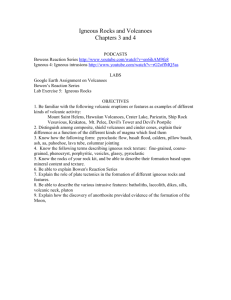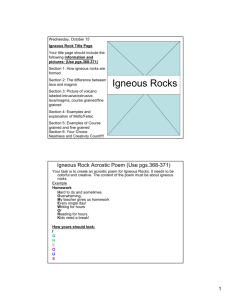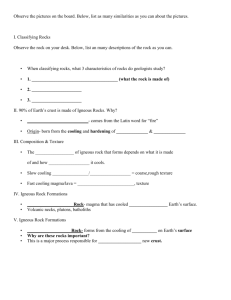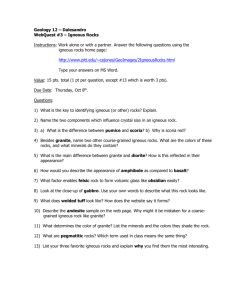Igneous rocks - angladeearth
advertisement
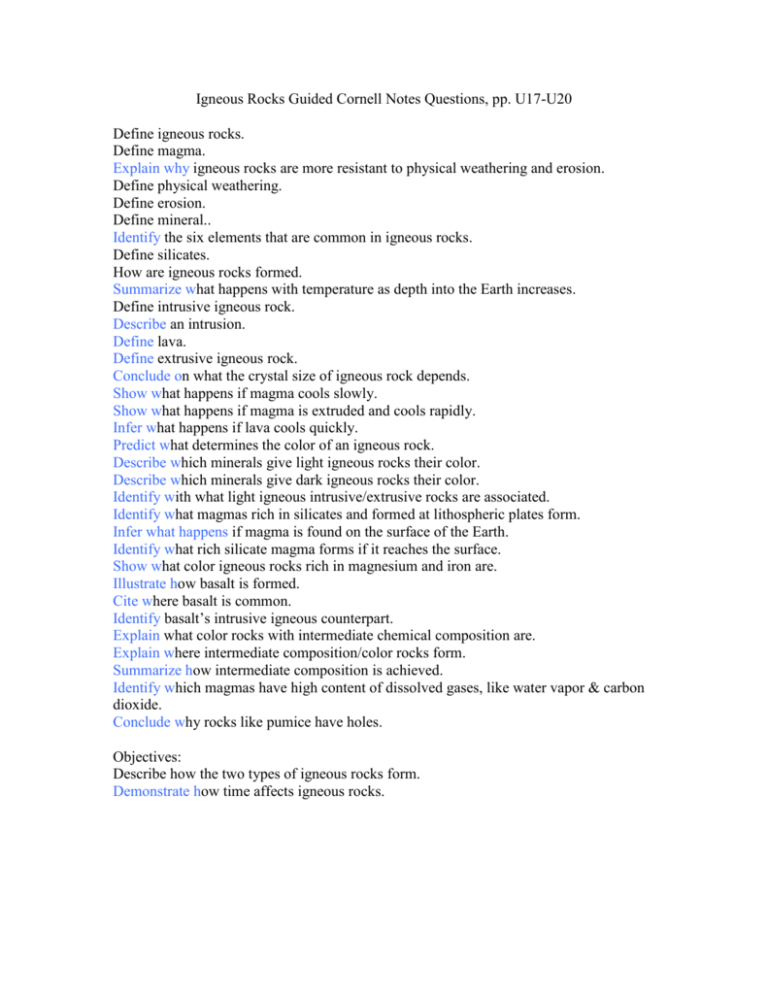
Igneous Rocks Guided Cornell Notes Questions, pp. U17-U20 Define igneous rocks. Define magma. Explain why igneous rocks are more resistant to physical weathering and erosion. Define physical weathering. Define erosion. Define mineral.. Identify the six elements that are common in igneous rocks. Define silicates. How are igneous rocks formed. Summarize what happens with temperature as depth into the Earth increases. Define intrusive igneous rock. Describe an intrusion. Define lava. Define extrusive igneous rock. Conclude on what the crystal size of igneous rock depends. Show what happens if magma cools slowly. Show what happens if magma is extruded and cools rapidly. Infer what happens if lava cools quickly. Predict what determines the color of an igneous rock. Describe which minerals give light igneous rocks their color. Describe which minerals give dark igneous rocks their color. Identify with what light igneous intrusive/extrusive rocks are associated. Identify what magmas rich in silicates and formed at lithospheric plates form. Infer what happens if magma is found on the surface of the Earth. Identify what rich silicate magma forms if it reaches the surface. Show what color igneous rocks rich in magnesium and iron are. Illustrate how basalt is formed. Cite where basalt is common. Identify basalt’s intrusive igneous counterpart. Explain what color rocks with intermediate chemical composition are. Explain where intermediate composition/color rocks form. Summarize how intermediate composition is achieved. Identify which magmas have high content of dissolved gases, like water vapor & carbon dioxide. Conclude why rocks like pumice have holes. Objectives: Describe how the two types of igneous rocks form. Demonstrate how time affects igneous rocks.


